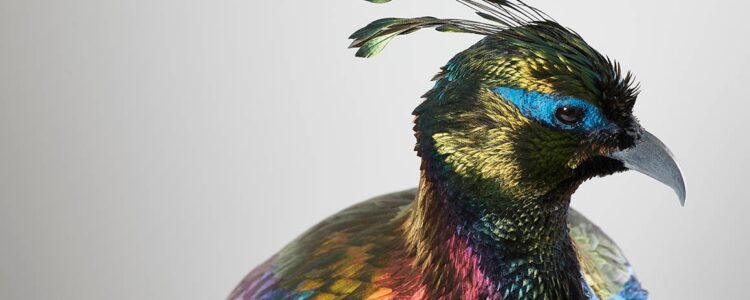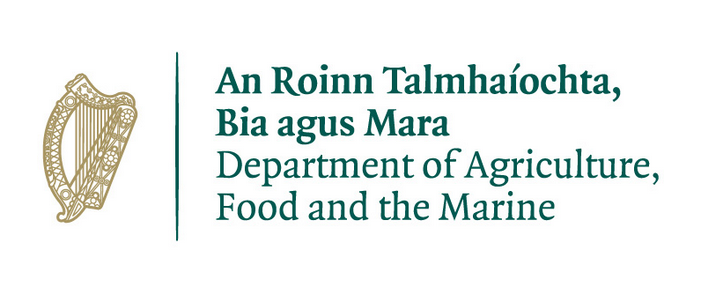
Taxidermy
Introduction to Wildlife Dealing and Taxidermy
Where a species of fauna or flora or any part, product or derivative thereof acquires a commercial value it can have negative consequences for the species concerned.
In the 19th century, plume hunting to supply the demand in the millinery trade for attractive bird feathers put great pressure on the survival of some of our most attractive birds. This trade was brought to an end in the early part of the 20th century and just in time to avert the extinction of the great crested grebe in Britain and Ireland.
A century ago, the wholesale trapping of songbirds for export to Britain was blamed for an alarming decline in goldfinches and other species in Ireland. Concern about this activity was one of the main drivers in the enactment of the Protection of Birds Act 1930. Indeed when this bill was being debated the case of a casual labourer who refused an offer of work was mentioned. He said he earned more in one day’s trapping of goldfinches for a Manchester dealer, who had a big foreign contract, than he could earn in a weeks ordinary work.
At any time, a rise in the demand for venison will always bring about a corresponding increase in deer poaching activity.
A well mounted specimen by a skilled taxidermist can be a joy to behold. However, if not regulated and controlled, this activity can adversely impact on some of our rarest species of fauna, as rarity and attractiveness makes a specimen more collectable. One has only to look at the faded specimens of fauna in our museums from a time past when taxidermy was in its heyday and unregulated to wonder what role that activity played in the disappearance of some species from our countryside.
There will always be some degree of trade in wild fauna and flora. The Wildlife Acts 1976 to 2012 contain provisions to regulate and control this activity to ensure that it is sustainable and does not negatively affect the conservation status of the species concerned.
Unlawful dealing in protected species
It shall be an offence for a person who is not a Licensed Wildlife Dealer to sell, keep for sale, transport for the purpose of sale or exchange, offer for sale or exchange, purchase for resale or exchange, or engage in taxidermy in respect of –
A protected wild bird or protected wild animal, at any stage of its life, whether alive or dead, or any parts, products or derivatives of such wild bird or wild animal
The eggs of a wild bird or the eggs or spawn of a protected wild animal, or any parts products or derivatives thereof, or
Fauna, at any stage of its life, whether alive or dead, set out in part 1 or 2 of the first schedule to the European Communities (Birds and Natural Habitats) Regulations 2011, and being fauna within the meaning of the Wildlife Acts
Exemptions
The Minister for Arts, Heritage and the Gaeltacht may, on application being made in that behalf, grant or renew a wildlife dealer’s licence authorising the applicant to carry on business as a wildlife dealer at premises specified in the licence
A wildlife dealer’s licence shall, unless it is previously revoked, remain in force until the 31st day of July following the year in which it was granted or renewed
The Minister may in considering an application or the grant or renewal of a licence, have regard to the following –
- the suitability of the applicant, taking into account the purposes of the Wildlife Acts, to hold a wildlife dealer’s licence
- the suitability of the premises, taking into account all relevant legislative provisions relating to food hygiene and food safety, where the applicant proposes to carry on the business of wildlife dealing, and
- the ability of the applicant to comply with wildlife dealing regulations which are for the time being in force
Every licensed wildlife dealer shall keep his wildlife dealer’s licence displayed prominently in the premises specified in the licence
Wildlife Licensing Unit,
National Parks and Wildlife Service,
Department of Culture, Heritage and the Gaeltacht,
90 King Street North,
Dublin 7
Email: wildlifelicence@chg.gov.ie
LoCall 1890 383 000
Control & Regulation
Licensed Wildlife Dealer Regulations
Licensed wildlife dealer– game species
A licensed wildlife dealer whose business as such is solely concerned with the sale or purchase for resale of game species, whether alive or dead, can only deal with game species lawfully taken or killed pursuant to the Wildlife Acts (Example: a deer stalker may sell his quarry to a licensed wildlife dealer for resale to the food industry)
Licensed wildlife dealer – other protected fauna
A licensed wildlife dealer whose business is dealing in protected fauna other than game species can only deal in such fauna, whether alive or dead, which is lawfully killed or taken pursuant to the Wildlife Acts. A licensed wildlife dealer who keeps any live specimen of protected fauna for sale must comply with provisions relating to the health and welfare of such fauna (Example: dealing in birds of prey for falconry)
Licensed wildlife dealer – sale for consumption
The owner or manager of any hotel, restaurant or any other premises where meals are provided for reward shall not purchase protected fauna (game species) otherwise than from a licensed wildlife dealer, unless he is himself such a dealer.
Where the owner or manager is not a licensed wildlife dealer, he must keep a record of all purchases of protected fauna (Example: restaurant serving wild venison or pheasant dishes)
Licensed wildlife dealer – taxidermy
A licensed wildlife dealer who in the course of his business provides a taxidermy service can only mount species of protected fauna that he or his customer has lawfully acquired under the Wildlife Acts. The taxidermist must enter in his register the grounds on which he or his customer claims to be in lawful possession of the fauna (Note: “found dead” will not constitute lawful possession)
Licensed wildlife dealer – records
Every licensed wildlife dealer shall keep at each premises specified in his wildlife dealer’s licence a register containing particulars of every receipt by purchase or otherwise and sale or other disposal involving protected fauna.
A conservation ranger may at any reasonable time inspect the licensed wildlife dealer’s register and it shall be the duty of the wildlife dealer concerned to produce the register for inspection of the ranger when so required.
Licensed wildlife dealer – sale of protected fauna
A licensed wildlife dealer shall not sell protected fauna in a public place.
A licensed wildlife dealer shall not sell protected fauna to, or purchase such fauna from, a person who he knows, or as regards whom it would be reasonable to expect him to know, to be under the age of twelve years.
In the interest of conservation, the sale, transport for sale, keeping for sale and offering for sale of five species of wild bird, namely Gadwall, Goldeneye, Shoveler, Greenland White-fronted Goose and Curlew or any readily recognisable part or derivative of any such bird, is prohibited.
CITES
CONVENTION ON INTERNATIONAL TRADE IN ENDANGERED SPECIES OF WILD FAUNA AND FLORA (CITES)
The worldwide trade in wildlife is the second largest threat to many species of wild fauna and flora after habitat destruction. Every year many millions of animals and plants are taken from the wild and are than sold as pets, ornamental plants, timber, leather, tourist curios, food and medicine. Many of the species involved are highly endangered, some on the brink of extinction.
CITES is an international agreement between governments that came into force in 1975. Its purpose is to ensure that international trade in specimens of wild animals and plants do not threaten their survival. Today, CITES accords varying degree of protection to over 30 000 species of animal and plants, whether they are traded as live or dead specimens, parts (such as ivory, leather belts or fur coats) or derivatives (such as medicines made from animals and plants)
CITES is implemented in Ireland trough EU wildlife Trade Regulations and enforced through the Wildlife Acts, 1976 to 2010. There are three main Annexes (A, B and C) to the EU Wildlife Trade Regulations. Species listed on Annex A are afforded the highest level of protection and the trade, acquisition for commercial purposes, display for commercial purposes, use for commercial gain and sale, etc of these species is prohibited.
It is possible to obtain an exemption from the prohibitions described above by obtaining a CITES Certificate, these are considered on a case by case basis, by the National Parks and Wildlife Service. The most likely situation under which a CITES Certificate would be issued is that the specimen involved was born and bred in captivity. In order to qualify as a captive born and bred specimen a number of criteria must be met including that the Breeding Stock must have been legally acquired. Many of our native birds of prey are included on Annex A and as they are also protected species under the Wildlife Acts a Possession Licence is required to keep them and a Wildlife Dealers Licence is required for any trade in these species.
The import and export of CITES species is also subject to the Customs Act.
Protected wild birds and protected wild animals under the Wildlife Acts 1976 to 2012
Land Mammals
- Badger
- Deer Species
- Hedgehog
- Red Squirrel
- Otter
- Hare
- Stoat
- Pine Marten
- All Bat Species
- Pygmy Shrew
Marine Mammals
- Dolphin, Porpoise, Seals & Whales
Reptiles
- Common Lizard & Marine Turtle
Amphibians
- Common Frog, Common Newt & Natterjack Toad
Crustacean
- Freshwater Crayfish
Molluscs
- Freshwater Pearl Mussel & Kerry Slug
